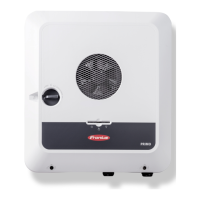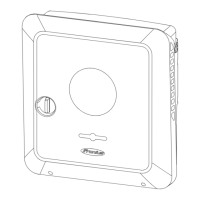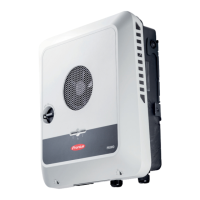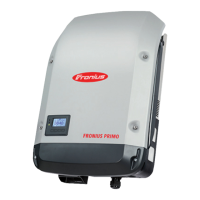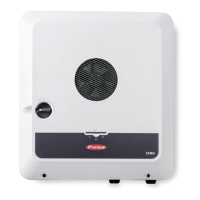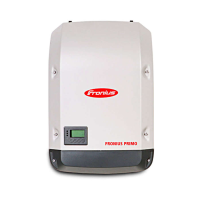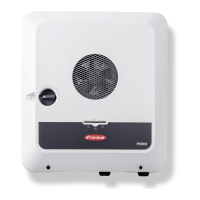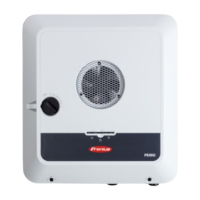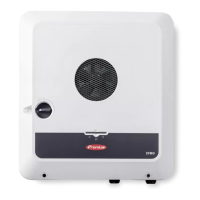NOTE!
Risk of USB flash drive becoming full.
This may result in data being lost or overwritten.
▶
When using USB flash drives, always ensure that there is sufficient storage
capacity on the flash drive.
Buffer memory If the USB stick is unplugged (e.g. for data backup purposes), the logging data is
written to a buffer memory in the inverter.
As soon as the USB stick is plugged in again, the data is copied automatically
from the buffer memory to the stick.
The buffer memory can store a maximum of six logging points. Data is only
logged while the inverter is running (output greater than 0 W). The logging inter-
val is permanently set at 30 minutes. Data can be recorded on the buffer
memory for a three-hour time period as a result.
When the buffer memory is full, the oldest data in the memory will be overwrit-
ten by the next batch of data.
IMPORTANT! The buffer memory requires a permanent power supply.
If there is a power failure while the inverter is in operation, all the data in the buf-
fer memory will be lost. To avoid losing data during the night, the automatic night
switch-off facility must be deactivated (switch the "Night Mode" setup parameter
to ON - see the Datamanager 2.0 Operating Instructions, section "Setting and
displaying the menu items", "Viewing and adjusting parameters in the DATCOM
menu item").
On the Fronius Eco or Fronius Symo 15.0-3 208, the buffer memory also func-
tions with just a DC supply.
Suitable USB
flash drives
Due to the variety of USB flash drives available on the market, it cannot be guar-
anteed that every USB flash drive will be detected by the inverter.
Fronius recommends that only certified, industry-grade USB flash drives are
used (look out for the USB-IF logo).
The inverter supports USB flash drives with the following file systems:
-
FAT12
-
FAT16
-
FAT32
Fronius recommends that the USB flash drive employed should only be used for
recording logging data or updating the inverter software. The USB flash drives
should not contain any other data.
40
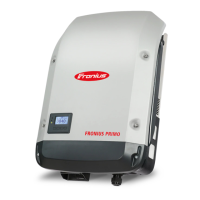
